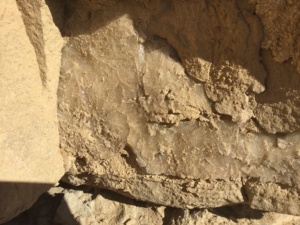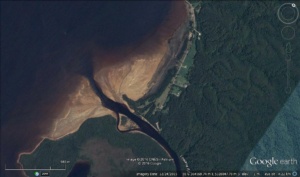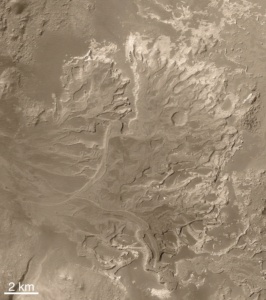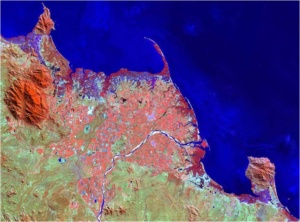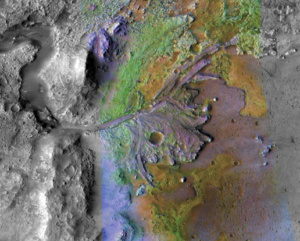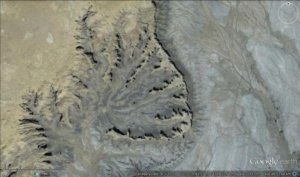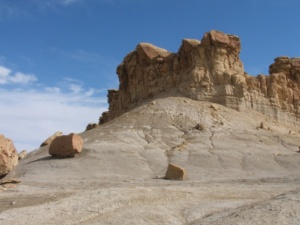
Archive: 06 Nov 2016
Interview with Shannon Rupert, Principal Investigator of Mars 160 Mission
Hear the latest on the mission from Shannon Rupert, Principal Investigator of the Mars 160 Mission in this audio clip.
Science Post – November 6th
Gypsum and Biosignatures
By Crew Biologist Anushree Srivastava
Our twin EVA operation is underway and our today’s EVA was focused on the sampling of gypsum. Like halite or sodium chloride (NaCl) that I wrote about in my previous science post, gypsum or calcium sulfate (CaSO4.2H2O) is another form of evaporite which is significant from astrobiological perspective. Gypsum can entomb biosignatures for a prolonged period of time due to its ability to retain water and the transparent surface makes the sunlight penetrable yet limits the high UV radiation. These features can allow microorganisms to refuge and sustain inside the microhabitat of these evaporite crystals during crystallization in the ancient times. Today we went past Factory Butte and collected multiple gypsum samples from fine and rough sandstone, shell, and soil. These gypsum deposits belong to the Cretaceous period (between 145.5 and 65.5 million years ago) which is last period of Mesozoic Era. Gypsum is widespread in this particular site and related to the weathering. We intend to perform microbiological analysis of these ancient evaporites.
Figure 1: Gypsum deposits.
Sol Summary – November 6th
Sol# 44
Person filling out report: Annalea Beattie
Summary Title: Back to work, it’s a sunny day.
Mission Status: On track
Sol Activity Summary:
This morning we met after breakfast to plan out the science EVAs and the science return for the next few weeks. We discussed the length of our mission, in relation to the key science areas and how to balance our science projects, allocating time and resources for each. We reviewed science sampling strategies in the field and clarified collaboration and role allocation, according to what is required by each project.
This afternoon, after a quick soup lunch we continue our science operations trials in the field. We all went on an EVA to an environment that is rich in gypsum and potentially halophiles, without our spacesuits. The aim was to compare efficiency and maximum science return in the field in and out of simulation.
We arrived late home to our hab, the moon is up and it’s starting to cool off in the evenings. Quick dinner, reports and an early night for us.
MDRS lessons:
- Remember to change your clocks! Spring forward, fall back.
- If you visit a spectacular location, always take the wide angle.
- If you visit a spectacular location, don’t leave your tripod on the ground and drive off.
Plans:
Geologists from the UK Rover Trials will visit the hab in the morning with the percussive geologist hammer SPLIT and Jon Clarke will test it out in the space suit.
Science Operations trials continue tomorrow lunch time with an EVA in full simulation.
Crew Physical Status: Healthy
Weather: lovely day, sunny and mild
Anomolies: Shower day for me.
Science Narrative – November 6th
DELTAS ON MARS AND NEAR MDRS
Jon Clarke
Ancient delta sediments near MDRS
Deltas are fan-shaped sediment deposits formed where rivers enter a body of standing water. They range from a few km, like the King River Delta in Tasmania, to across to several hundred km, such as the Ganges-Brahmaputra Delta in Bangladesh. They are often important locations for the rise and sustaining of human civilisation, such as the Nile, Tigris-Euphrates, and Rhine deltas.
The small Delta of the King River, Tasmania (Google Earth image).
The large Burdekin River delta, Queensland is about 40 km across (LANDSAT 4 image)
The sedimentary processes that operate in deltas are very favourable for the accumulation of organic matter. Many ancient delta deposits now host coal deposits, such of the Appalachian mountains in the United States. Oil and gas are also generated with delta successions, often while the delta is still active, as occurs with the Mississippi, Mahakam, and Niger Deltas.
Eberswalde delta on Mars (NASA/JPL/Malin Space Science Systems image)
For this reason ancient deltas that have been observed on Mars are of great interest as sites where organic matter from ancient martian life may have accumulated. Therefore martian deltas have been proposed as targets for past and future missions such as Curiosity and the 2020 rover. A good example of a Martian delta is found in Eberswalde Crater, while another is exposed in Jezero Crater. Both these deltas have been partly exhumed. Good exposures of fine-grained and clay rich deposits occur at both sites and rovers could drive up and sample the outcrops for analysis on site or return to Earth. We know from our experience with terrestrial rocks that the fine-grained delta sediments can preserve organic molecules (and microfossils) for hundreds of millions or even billions of years.
Jezero crater delta (NASA/JPL/JHUAPL/MSSS/Brown University image). The different colours correspond to different clay minerals deposited by the delta
Skyline Rim is a prominent cliff of Ferron Sandstone that runs north-south east of MDRS. The Ferron Sandstone was deposited by a series of Cretaceous deltas that have been extensively studied by many researchers because of their excellent exposure and significance as a host for coal and gas accumulations elsewhere in Utah. Mars analogue researchers can study how deltas are expressed in the field and use the organic-rich sediments to test instruments that analyse for organic molecules. Researchers from NASA and ESA have done so on previous expeditions to MDRS. We too will be examining some of these deposits over the next couple of EVAs.
Small, partially exhumed Cretaceous delta lobe in the Ferron Sandstone along Skyline rim showing radial channels and an outer rim of possible beach sands




